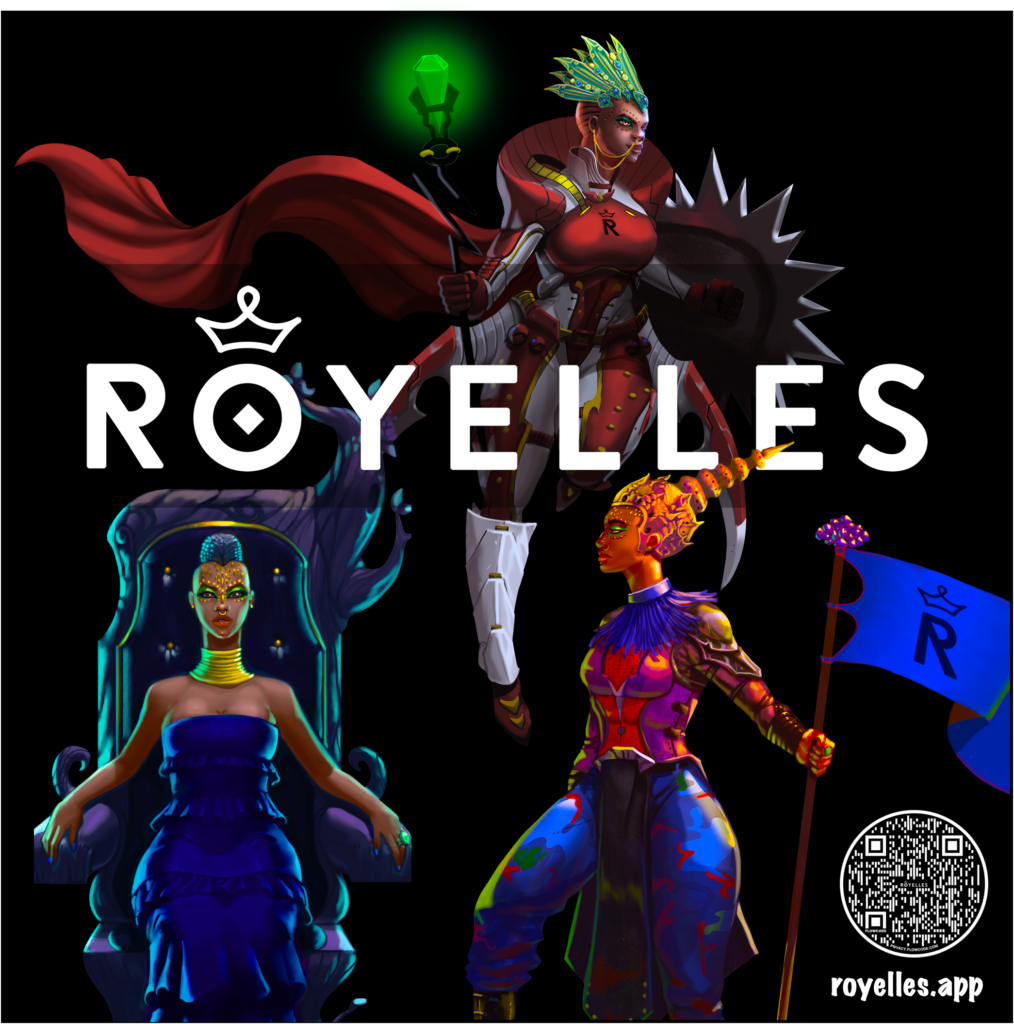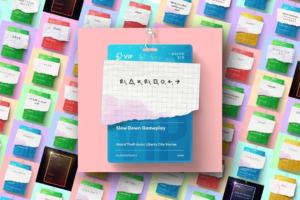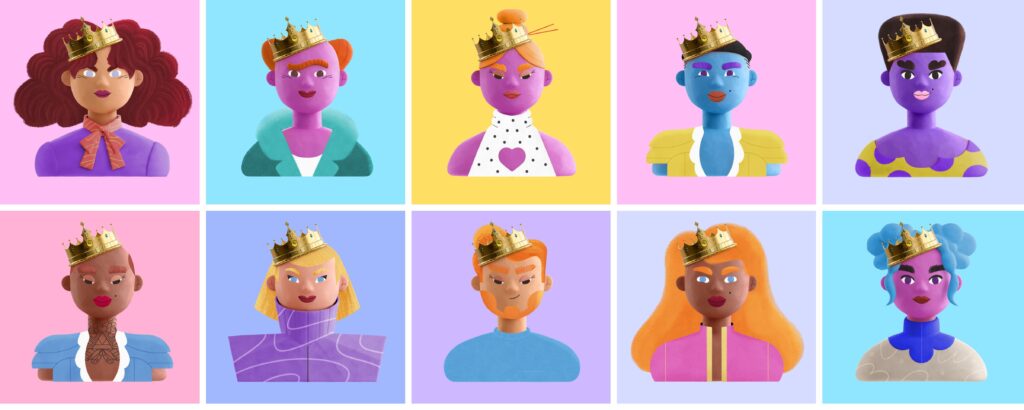
Toxicity in the gaming industry, including racism and sexism, is no secret to most gamers and industry insiders.
“The gaming industry specifically has been known to be a place where Black people and other creators of color have been targeted,” says Shanique Yates.
Evolving the industry to be more inclusive of Black and Brown participants was on Mukami Kinoti Kimotho’s mind when she developed a new game called Royelles. In her game, she only offers Black and Brown avatars inspired by real-life STEM role models.
I had a chance to catch up with her over email, and here’s what she said about how gaming ought to evolve to be more inclusive.
What does it mean for Black and Brown girls to see themselves solely represented in the context of an online game?
It’s a powerful validation of their value and worth — a reminder that young BiPOC girls are fully equipped, just as they are, to lead, to soar, and to have positive impact; and that they can unequivocally exist in a universe that celebrates their achievements and choices without comparison to the predominant caucasian standard.
When Black Panther premiered, young boys and girls across the globe saw themselves as (s)heros for the first time. Those qualities and characteristics that had otherwise set them apart as different, caused them to feel less than, or other — were being celebrated in this silver screen phenomenon as superpowers! The playing field as it were, had been equalized, they were empowered and invested. The same notion applies to mobile gaming. The sooner we can bridge the gap in representation of brown and black excellence, the more likely we are to see the fastest growing demo in the gaming community — gamer girls, embrace, be a part of and thrive!
What do you think about the gaming/tech community’s overall approach to diversity, equity and inclusion in recent years?
We have much work to do, particularly when we consider the long-lasting consequences the lack of comprehensive strategies has had on some of the most underserved communities within the ecosystem.
Many have been slow to respond, or simply done what is needed to remain relevant on the surface, but they have not taken steps towards making true, long standing change — with girls and women, particularly those within communities of color, disproportionately impacted.
Do you have plans to introduce avatars of other skin colors or genders, or does keeping the ecosystem closed to female people of color add something essential to the experience of the user? Why?
Our priority with our initial product was to create a safe and inclusive space for the young gamers and learners who need representation, inspiration and empowerment the most – which meant being very intentional in the creation of our avatar personas and narratives – the goal being to elevate and broaden existing standards of bravery, brilliance and beauty.
At the core of our strategy is the intention that all users, particularly black and brown gamers girls, who have otherwise been underserved, feel valued, seen and empowered in their gameplay, which in turn translates into self confidence, limitless curiosity and a realization of their leadership potential. This will continue to inform our product development roadmap as we incorporate new skins, storylines and perspectives to the overall experiences.
I see that you’re focused specifically on girls and nonbinary individuals. Why was this an important focus for you?
Well, for starters, gendered notions of intelligence picked up very early in girls and non-binary individuals affect their views on who they are, why they’re here and what is possible for them. 6yr olds think brilliance is much more likely in boys; Middle schoolers’ interests in STEAM subjects plummet as they reach high school, even though we know that some of the most lucrative, impactful careers are in STEAM fields and that increasing the number girls, thus women in STEAM can equate to an additional $12Trillion in the global GDP!
The realities of the pandemic, coupled with increased digital media consumption at young ages has resulted in an unprecedented global crisis with girls disproportionately impacted by experiences of isolation, depression, cyber-bullying, body shaming, poor self esteem and erroneous, really limiting mindsets. Moms like me (frankly all parents) are demanding MORE from gaming, particularly for our underserved communities of young gamers.
Talk about how you weave STEAM and leadership-focused adventures into the context of your games.
We have created learning adventures anchored in fierce avatar personas and the narratives of real-life STEAM super(s)heroes. Experientially, gamers can delve into an immersive story about a Global Peace Ambassador on the first human mission to Mars; activate the AR tech in their mobile devices to beam their avatar into their play space; Flex STEAM-focused face filters; Engage in empowering, leadership-focused conversations with their fav digital character; go on quests to explore the lives of inspiring STEAM leaders like the Head of Tech at NASA, an AI Guru at AWS, a clinical trails experts in the UK, a gender justice advocate in South Africa – experiences that activate critical thinking, inquiry based learning, quantitative and fluid reasoning, visual processing, while encouraging self awareness and inspiring confidence and curiosity about STEAM focused life-paths.
Our specially curated virtual programming compliments the in-game experiences with impact that beyond entertainment, is safe, inclusive, educational and transformational.
What does Black and Brown representation in entertainment mean for the broader culture?
Now more than ever, representation and inclusion matters! The black, Indegenous, people of color experience and perspective is absolutely crucial to the growth and sustainability of the creative economy — this is how we will break barriers and dismantle stereotypes, build pipelines of diverse top talent, driving this talent towards lucrative career paths; which in turn will help narrow existing pay gaps and enhance our overall economic security. This is how we will diversify global workforces and create equitable workplaces that prevent biases in the products and services our field produces.
At Royelles, we take this opportunity to lead the charge very seriously and view our platform as a means to continuously drive meaningful discourse that benefits the overall good of the broader culture.
You talk about being concerned about screen time in your online video. How has that influenced the way you’ve built your game?
In today’s reality, mobile gaming is at the heart of how our kids create, connect, learn and have fun with them spending upwards of 6 hours daily on their devices. As adult influencers, we are constantly in search of games and apps that make that time worthwhile. A unique and powerful feature we built into the Royelles game is a Parent Portal that not only gives adults line of sight to how gaming time is being spent, but tools and strategies they can leverage to play together and to create moments that matter with their gamers – like conversation prompts or the ability to send empowering mantras and affirmations to the gamer, right in the app.
Every interaction with Royelles is designed with the gamers’ well-being in mind so that screen time really becomes growth, inspiration, empowerment, education and transformation time.
How did you end up teaming up with a real-life NASA leader?
Our learning adventures are anchored in the narratives of fierce avatar personas like MARA – born into royalty, being groomed by the matriarchs in her life to lead, with a big dream for herself – to be on first human mission to Mars! It made sense that Dr. Christyl Johnson – Deputy Director of Technology & Research Investments at NASA , an avid girls crusader who has broken incredible barriers herself, and is a huge proponent of bringing more girls into STEM/STEAM fields, would narrate MARA’s story and feature in the Super(s)hero’s Rule quest as one of MARA’s fierce role models.
Dr. Johnson and I met at a UN Women/SAP event in New York City and connected on a heart level. She is the epitome of fierceness and an inspiration to all. Her personal journey and that of the 21 other Super(s)hero’s we spotlight in the Royelles game, is the means by which we bridge the gap between gamers dreams and the reality of what is possible when they are bold, fearless and undaunted architects of their destinies.















